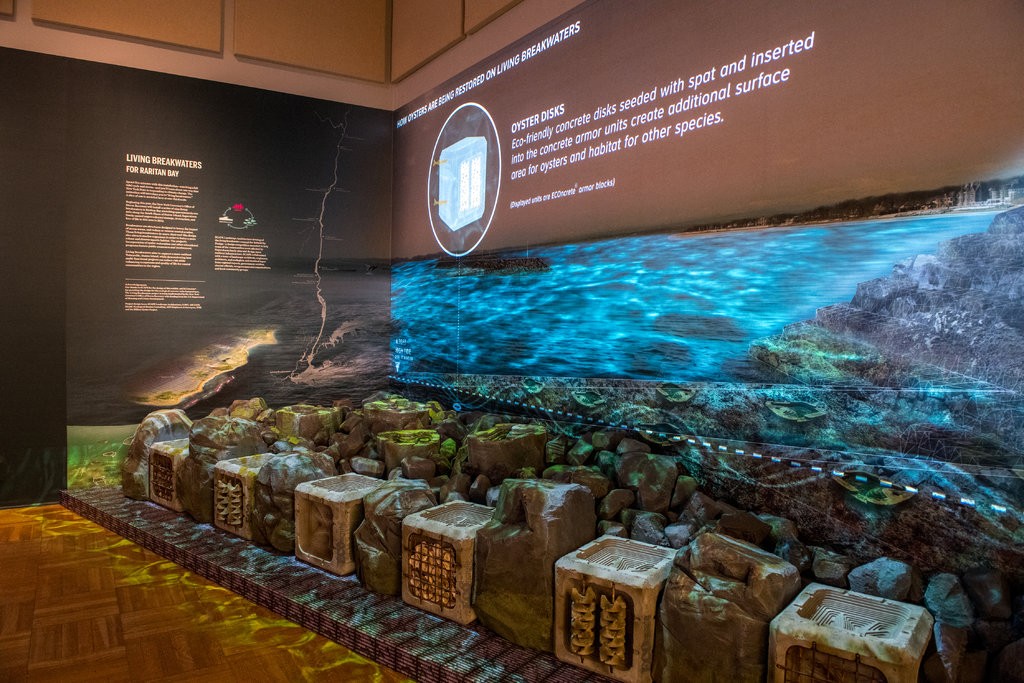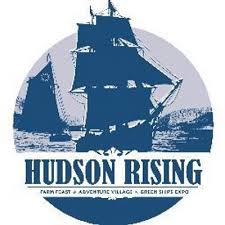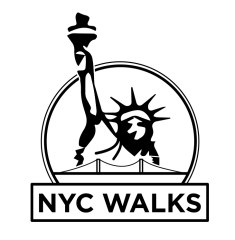Hudson Rising at the New-York Historical Society

New York City is unique and different in many. One of them is that New York City has no less than three museums dedicated chronicling, profiling, and explaining its history. We have the New-York Historical Society, at 170 Central Park West, founded in 1804, the second oldest museum in New York State after the Albany Institute of Arts and Sciences. Although modeled after the Massachusetts Historical Society, it just concentrates on New York City. In the early twentieth century, the Museum of the City of New York emerged as a competitor, sponsored by the nouveau rich who could not get along with the old rich. Then there is the New York State Museum that has some incredible exhibitions on NYC history including a subway car! If you notice the name of the New-York Historical Society, it has a hyphen between the New and the York recalling the time that New-York was always spelled with a hyphen before the Civil War.
The outside of the building now has an image display. On the 77th Street entrance, there is a life-size statue of Frederick Douglass and on the Central Park West side is a life-size statue of Abraham Lincoln. Inside, you have two wonderful eateries the more upscale Café Storico, specializing in Italian cuisine, and the more affordable Parliament Coffee Shop. The bookstore of the society has interesting stuff on sale from books to kitchen magnets to dolls to coloring books to Tiffany glass replicas of various kinds and much more.
“Hudson Rising” on view from March 1 to August 4, 2019, explores 200 years of environmental change. I went on Earth Day to see the exhibition. In the lobby were environmental and organizations intimately connected with the river such as the New York Botanical Gardens, Wave Hill, and the New-York Historical Society. Jim Picinich, a docent volunteer  gave a wonderful almost hour tour of the exhibition. His presentation was informative, humorous, thoughtful, and entertaining.
gave a wonderful almost hour tour of the exhibition. His presentation was informative, humorous, thoughtful, and entertaining.
We traveled through time and up the Hudson River from the Leni Lenape of Manhattan Island to the United State Military Academy at West Point to Sing Sing Prison to the Hudson River School of Hudson River Bank and the Catskills to the Robert Fulton’s steamboat to the Erie Canal and to the source of the waters of the Hudson in the Adirondacks. New York State established in 1892 Adirondacks as a state park to prevent the mountains being denuded of trees which would have endangered the run-off of water that supplies the Hudson River. In 1898, Governor Teddy Roosevelt of the State of New York co-established the Palisades Inter-State Park along with the governor of New Jersey. The Rockefellers and others donated generously to help purchase land to set up the park. The Harriman family gave us Bear Mountain and Harriman State Parks. The Bear Mountain Bridge, at one point, was the longest bridge in the world. The Hudson River in terms of river traffic is the second busiest river in the nation!
Over the centuries, fishing, hunting, agriculture, commerce, and industry competed to use the river. Pollution from various sources such as the manufacture of bricks, tanning, and heating of water through Con Edison Nuclear Power Plant at Indian Point and overfishing degraded the environment. General Electric dumped PCBs into the river. The Hudson River Estuary where the fresh water of the river meets the brackish salt water of the Atlantic Ocean in New York Harbor no longer gave forth oysters and more than one hundred varieties of fish. Once upon the environs of the Hudson River supplied half the world’s oysters but no more.
The environmental movement to save and restore the Hudson River was re-energized when Consolidated Edison proposed building a series of hydro-electric power plants by carving into the mountains and river banks of the Hudson. The locals organized to sue and for the first time, the US Supreme Court ruled that people could have an interest in protecting the environment even though they had no financial interest. Peter Seeger, the folk singer, gave voice in song to help create awareness and restore the river.
The exhibition is nicely arranged with relics, models, keepsakes, videos, and stuff that you can touch. For me, the best part was to view “The Course of Civilization” series of five paintings by Thomas Cole that I always enjoy looking at when I visit the New-York Historical Society. They are symbolic of the degradation of the environment by industry that was experienced by the Hudson River. One learns the history and then one is inspired to do something about it.
NYC Walks Blog 66 Hudson Rising at the New-York Historical Society by Dr. Philip Ernest Schoenberg #ghost
